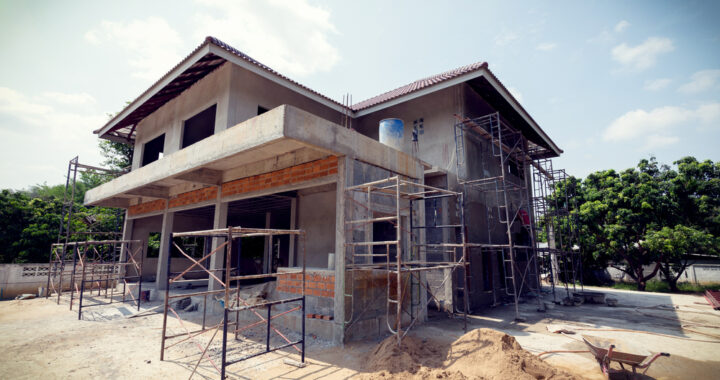 The contingency fee multiplier: a potential incentive for taking a case on contingency, such as an insurance coverage dispute, where the insured sues his/her/its insurer on a contingency fee basis.
The contingency fee multiplier: a potential incentive for taking a case on contingency, such as an insurance coverage dispute, where the insured sues his/her/its insurer on a contingency fee basis.
In a recent property insurance coverage dispute, Citizens Property Ins. Corp. v. Agosta, 43 Fla.L.Weekly, D1934b (Fla. 3d DCA 2018), the trial court awarded the insured’s counsel a contingency fee multiplier of two times the amount of reasonable attorney’s fees. The insurer appealed. The Third District affirmed the contingency fee multiplier.
Of interest, on appeal—which is reviewed under an abuse of discretion standard of appellate review–the Third District analyzed the state of Florida law on contingency fee multipliers.
To begin with, Florida has adopted the lodestar approach for determining reasonable attorney’s fees based on the following factors to consider (known the Rowe factors based on the Florida Supreme Court case):
(1) The time and labor required, the novelty and difficulty of the question involved, and the skill requisite to perform the legal service properly.
(2) The likelihood, if apparent to the client, that the acceptance of the particular employment will preclude other employment by the lawyer.
(3) The fee customarily charged in the locality for similar legal services.
(4) The amount involved and the results obtained.
(5) The time limitations imposed by the client or by the circumstances.
(6) The nature and length of the professional relationship with the client.
(7) The experience, reputation, and ability of the lawyer or lawyers performing the services.
(8) Whether the fee is fixed or contingent.
Agosta citing Florida Patient’s Compensation Fund v. Rowe, 473 So.2d 1145 (Fla. 1985).
Based on the consideration of these factors, the trial court determines through an evidentiary hearing a reasonable hourly rate to multiply by a number of reasonable hours expended in the litigation. This is referred to as the lodestar amount or lodestar figure. However, the court may add to this lodestar amount by tacking on a contingency fee multiplier. For example, assume the trial court found 100 reasonable hours were incurred at the reasonable hourly rate of $300. This would result in an attorney’s fees award of $30,000. But, with the contingency fee multiplier, the trial court can add to this. A multiplier of 2 would result in an attorney’s fees award of $60,000, hence the incentive for moving for the multiplier.
In determining whether to add a contingency fee multiplier, the trial court must consider competent, substantial evidence in the record (offered at the evidentiary hearing) of these three factors:
(1) whether the relevant market requires a contingency fee multiplier to obtain competent counsel;
(2) whether the attorney was able to mitigate the risk of nonpayment in any way; and
(3) whether any of the factors set forth in Rowe are applicable [the factors mentioned above], especially, the amount involved, the results obtained, and the type of fee arrangement between the attorney and his client.
Agosta citing Standard Guarantee Ins. Co. v. Quanstrom, 555 So.2d 828 (Fla. 1990)
There has been a debate as to whether the contingency fee multiplier only applies in rare and exceptional circumstances. The Florida Supreme Court (hopefully) put this issue to bed rejecting the argument that the contingency fee multiplier only applies in rare and exceptional circumstances. Agosta citing Joyce v. Federated National Ins. Co., 228 So.3d 1122 (Fla. 2017).
Just as important, and perhaps the most important to me, the Florida Supreme Court held that a “fee multiplier ‘is properly analyzed through the same lens as the attorney when making the decision to take the case,’ as it ‘is intended to incentivize the attorney to take a potentially difficult or complex case.’” Id. quoting Joyce, 228 So.3d at 1133. This is important because the complexity of a case is not determined at looking at a case in hindsight based on the actual outcome of the case, but looking at a case through the same lens as the attorney at the time the decision is made to handle the case. Id. citing Joyce.
The Florida Supreme Court also stated that the first contingency fee multiplier factor—the relevant market factor—is based on whether there are attorneys in the relevant market who have the skills to effectively handle the case and would have taken the case absent the availability of a contingency fee multiplier. Id. citing Joyce.
Finally, the Florida Supreme Court stated that the third contingency fee multiplier factor that considers the results obtained is not based on the amount of recovery, even a recovery not exceptionally large—“the Florida Supreme Court held that the trial court correctly analyze the ‘outcome’ of that case when it found that ‘[a]lthough the amount involved [$23,500] was ‘not exceptionally large,’ it was material to the Joyces [plaintiffs].” Id. quoting Joyce, 228 So.3d at 1125.
The contingency fee multiplier adds incentive to handle certain insurance coverage disputes on contingency. If a multiplier is obtained, it definitely rewards the risk of taking a case on contingency (and certainly one of the reasons I explore such contingency fee options!).
Please contact David Adelstein at dadelstein@gmail.com or (954) 361-4720 if you have questions or would like more information regarding this article. You can follow David Adelstein on Twitter @DavidAdelstein1.




 In an insurance coverage dispute, it is common for the insured or the insurer to file a lawsuit that includes a claim for
In an insurance coverage dispute, it is common for the insured or the insurer to file a lawsuit that includes a claim for 